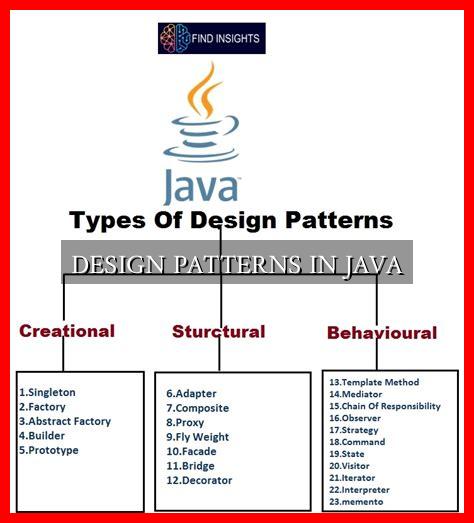-
Table of Contents
Design Patterns in Java
Design patterns are reusable solutions to common problems that software developers face during the design and implementation of software systems. In Java, design patterns play a crucial role in creating robust, maintainable, and scalable applications. By following established design patterns, developers can streamline their development process and improve the overall quality of their code.
Types of Design Patterns
There are three main categories of design patterns in Java:
- Creational Patterns: These patterns focus on object creation mechanisms, providing flexibility in creating objects without specifying their exact class. Examples include Singleton, Factory Method, and Builder patterns.
- Structural Patterns: These patterns deal with object composition and provide ways to simplify the structure of classes. Examples include Adapter, Decorator, and Facade patterns.
- Behavioral Patterns: These patterns focus on communication between objects, defining how objects interact with each other.
. Examples include Observer, Strategy, and Template Method patterns.
Benefits of Using Design Patterns
There are several benefits to using design patterns in Java:
- Improved code reusability: Design patterns promote reusability by providing proven solutions to common problems.
- Enhanced maintainability: By following established design patterns, developers can create code that is easier to maintain and update.
- Scalability: Design patterns help in building scalable applications that can adapt to changing requirements.
Example: Singleton Pattern
One of the most commonly used design patterns in Java is the Singleton pattern. This pattern ensures that a class has only one instance and provides a global point of access to that instance.
Here is an example of implementing the Singleton pattern in Java:
“`java
public class Singleton {
private static Singleton instance;
private Singleton() {}
public static Singleton getInstance() {
if (instance == null) {
instance = new Singleton();
}
return instance;
}
}
“`
In this example, the Singleton class has a private constructor and a static method getInstance() that returns the singleton instance of the class.
Case Study: Observer Pattern
The Observer pattern is another widely used design pattern in Java. It defines a one-to-many dependency between objects so that when one object changes state, all its dependents are notified and updated automatically.
One real-world example of the Observer pattern is the implementation of event listeners in GUI frameworks like JavaFX. When a user interacts with a GUI component, such as clicking a button, the event listener (observer) is notified, and the corresponding action is triggered.
Conclusion
Design patterns in Java are essential tools for software developers to create efficient, maintainable, and scalable applications. By understanding and applying design patterns, developers can improve the quality of their code and streamline the development process. Whether you are working on a small project or a large-scale application, design patterns can help you solve common problems and build robust software systems.
For more information on design patterns in Java, check out the JavaTpoint website.





